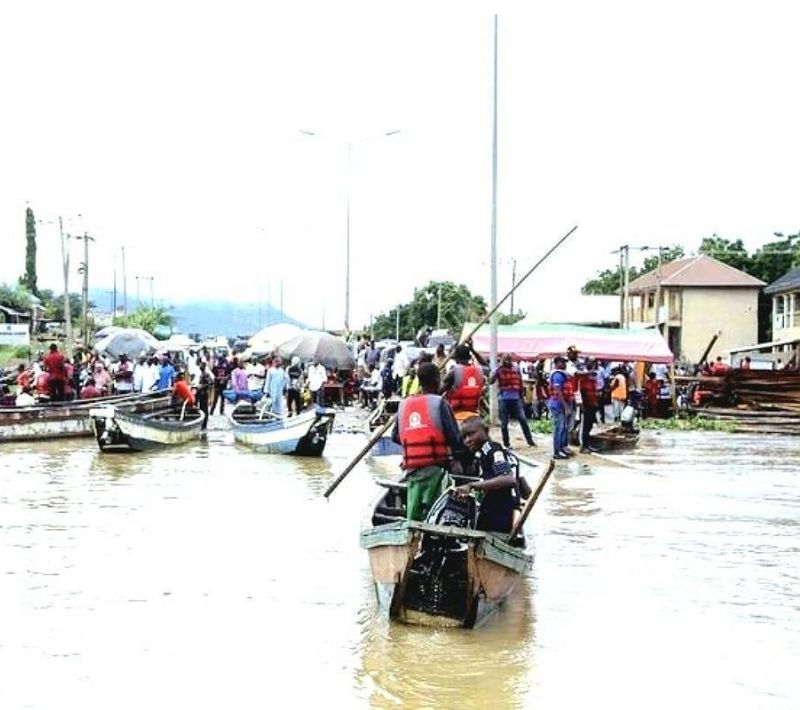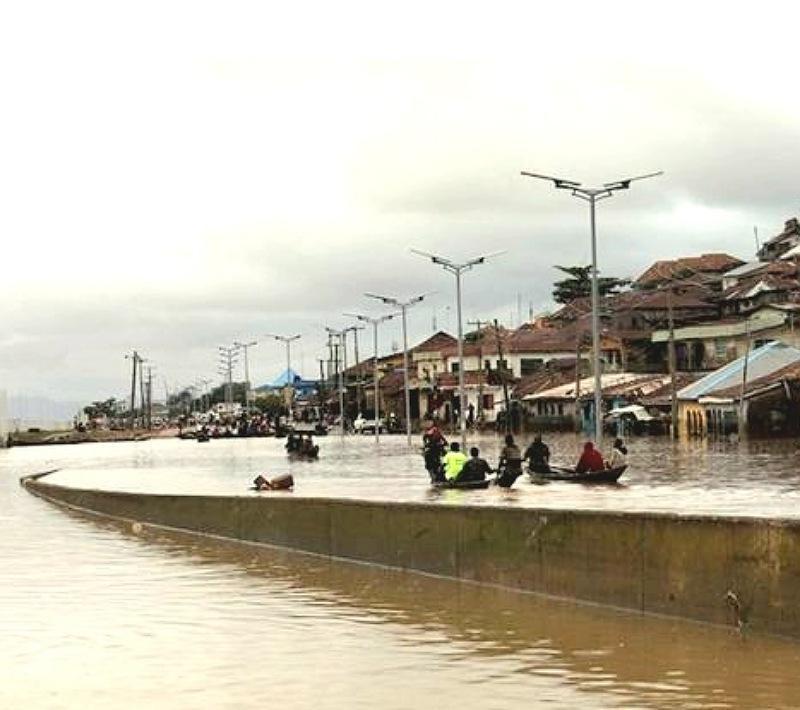2022 Flooding in Nigeria Kills Over 600 People, Displaces Over A Million

After seeing footage of how hundreds of people are getting killed and millions of Nigerians are losing their homes, you would think the government of the day would focus more on rescuing and controlling damages in the affected areas.
Nigeria is currently experiencing its worst flooding in ten years. Over 600 people have died, almost 3,000 people are already injured and over 1.3 million people have lost their homes and property. Ordinarily, something as massive as this should have garnered more attention by now, but measures are yet to be put in place by the government.
Areas Already Affected by The Flood in Nigeria

More than 200,000 homes have been completely or partially damaged by the incessant flooding that started around June 2022. Out of the 36 states in the nation, 34 states have already been affected.
It’s no surprise that more than 2.5 million Nigerians are in dire need of assistance (with 60% of them being children at risk of drowning, waterborne diseases, and malnutrition.)
Cases of respiratory infection, skin diseases, diarrhea, and water-borne diseases are already being recorded in the areas that have been ravaged by the floods.
Below is a list of some of the states that have already been affected in the Northern and southern regions of the country.
States Affected in the Northern Region
1. Adamawa
2. Kebbi
3. Gombe
4. Taraba
5. Benue
6. Jigawa
7. Kaduna
8. Kogi
9. Niger
10. Nasarawa
11. Kano
12. Abuja (FCT)
13. Katsina
14. Kwara
States Affected in the Southern Region
1. Anambra
2. Bayelsa
3. Cross River
4. Delta
5. Rivers
6. Imo
Farmers have suffered huge losses as they watched their investments get washed off by the floods, and some have even died during this incident.
This year’s rainfall has been unusually high in both the north and the south. As a result, it combined with the yearly release of Cameroon’s Lagdo Dam – which is on the Benue river – to turn an annual occurrence into a natural disaster.
“In some cases, the plantations and livestock were lost completely, whereas, in others, sizable quantities were lost. On the whole, we can safely say that about 60 percent or more of the expected yields were lost to flooding,” Ibrahim Kabiru, national president of the All Farmers Association of Nigeria (AFAN) said.
Current Damages by the 2022 Flooding in Nigeria

1. Death Toll
Over 600 deaths have been officially announced by the government. Of course, there will be more in reality that will not be accounted for because of the incident.
2. Injured People
As of 20th October, a total of 2,407 people have been recorded to be injured due to the flooding.
3. Internally Displaced Persons
1.4 million residents have been forced to leave their homes to find shelter in less affected areas because of the floods.
4. Destroyed Homes
89, 348 houses have been destroyed so far. Some are partially covered, others completely submerged.
5. Other Property Damages
70,566 hectares of farmland and crops have been destroyed and submerged by the floods.
Many farmers have suffered losses in food-producing states like Adamawa, Anambra, Benue, Gombe, Niger, Jigawa, Nasarawa, Kogi, Delta, and parts of Kaduna.
6. Food Shortages
Thousands of hectares of rice farms in Taraba, Kano, Benue, Jigawa, Niger, Kebbi, Kogi, and other rice-producing states up North, have been reportedly washed away.
Worse still, farmers in Taraba (one of the largest rice-producing states in Nigeria), say that about 90 percent of farms have already been destroyed by flood.
The flooding that occurred in Nasarawa state affected one of the country’s biggest rice farms, and this will inadvertently lead to an increase in the price of the staple ahead of the forthcoming festive season.
With so much damage to crops and other food resources, the nation is bound to fall into a deeper recession as hunger levels rise among the masses.
Prices of foodstuffs will increase and fewer people will be able to afford to feed themselves and their families.
7. Oil and Gas Industry
The oil and gas sector that the nation continues to hold onto as its lifeline is also under duress because of the flooding. Nigeria strongly relies on fossil fuel exports for 90% of its foreign exchange and approximately half of its budget.
The Nigeria Liquefied and Natural Gas company (NLNG) has declared force majeure because of the disruption in supply due to the widespread flooding.
Force majeure is a clause in a contract that frees both parties from obligation if an unforeseen or extraordinary event directly prevents one or both parties from fulfilling their obligations.
Reuters reported that the NLNG declaration could restrict the country’s global gas supply by nearly 4% and as such, plunge the nation’s income further down the drain.
8. Health Issues
As of 12th October 2022, a total of 7,485 cases of cholera and 319 associated deaths have been recorded in the northeastern states of Adamawa, Borno, and Yobe alone.
Final Thoughts
Nigeria is blessed with so many natural resources but because of poor management, the country continues to languish in starvation and death caused by flooding. Hopefully, constructive measures are taken soon to curb the ever-increasing damages of the flooding.
All images are sourced from Pinterest

